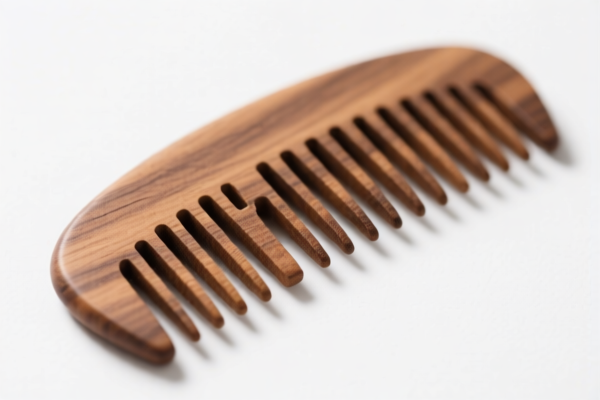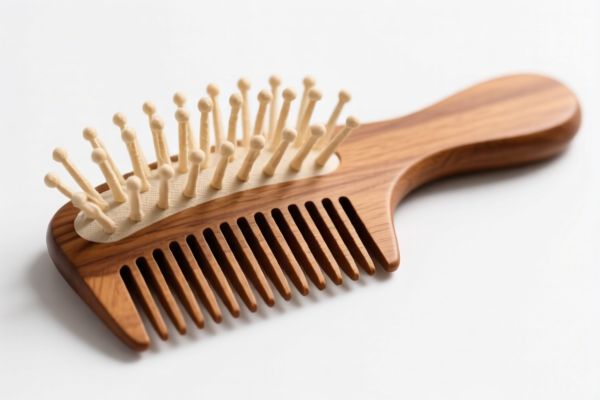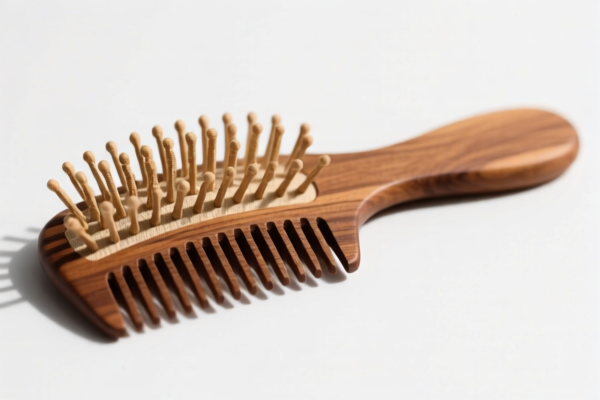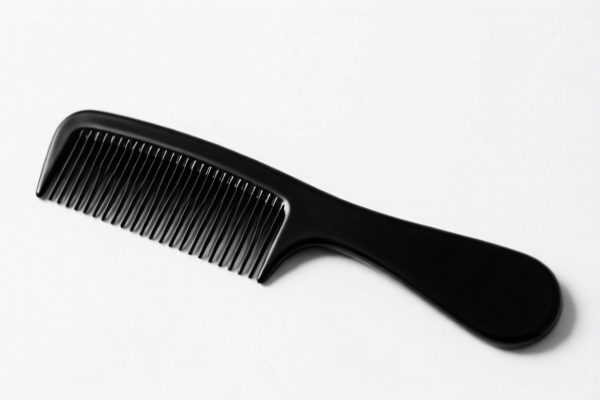| HS Code | Official Doc | Tariff Rate | Origin | Destination | Effective Date |
|---|---|---|---|---|---|
| 9615902000 | Doc | 38.1% | CN | US | 2025-05-12 |
| 9615113000 | Doc | 28.8¢/gross + 4.6%+30.0% | CN | US | 2025-05-12 |
| 8516320020 | Doc | 33.9% | CN | US | 2025-05-12 |
| 6815994170 | Doc | 55.0% | CN | US | 2025-05-12 |
| 6815992000 | Doc | 55.0% | CN | US | 2025-05-12 |
| 3926902500 | Doc | 44.0% | CN | US | 2025-05-12 |
| 3924104000 | Doc | 33.4% | CN | US | 2025-05-12 |
| 3924905650 | Doc | 40.9% | CN | US | 2025-05-12 |




Curling Comb
A curling comb is a hair styling tool designed to create curls or waves in hair without the use of heat. It functions by manipulating hair strands while damp or wet, shaping them around the comb's teeth to induce a curled pattern as they dry.
Material:
- Plastic: Commonly used for affordability and ease of cleaning. Various types of plastic are employed, with varying degrees of flexibility and durability.
- Metal: Often found in the teeth of the comb, providing strength and assisting in shaping the hair. Stainless steel is a frequent choice due to its resistance to rust.
- Wood: Less common in modern curling combs but historically used, offering a gentler styling experience.
Purpose:
The primary purpose of a curling comb is to form curls or waves in hair. It is often favored as a heatless alternative to curling irons or hot rollers, minimizing potential hair damage. It can also be used to add volume and texture.
Function:
The comb's teeth are designed to separate and hold hair strands. By sliding the comb through hair while maintaining tension, a wave or curl is created. The hair is then allowed to air dry or is secured with clips or pins to maintain the shape until fully dry. The comb's shape and tooth spacing influence the tightness and type of curl achieved.
Usage Scenarios:
- Home Styling: Most commonly used for personal hair styling at home.
- Professional Salons: Some stylists use curling combs for specific curl patterns or as a finishing tool.
- Creating Various Curl Types: Suitable for creating loose waves, tight curls, or textured styles depending on technique.
- Wet or Damp Hair: Best used on hair that is at least damp, allowing the hair to mold around the comb's shape.
Common Types:
- Traditional Curling Comb: Features a long, toothed comb, often with widely spaced teeth. Suitable for creating larger, looser curls.
- Pick Comb: A comb with widely spaced teeth, often used on textured hair to create volume and defined curls.
- Rattail Comb (with curling function): A comb with a pointed end for sectioning hair, combined with teeth for curling.
- Wave Comb: Specifically designed for creating wave patterns in hair, often used in specific hairstyles.
- Flexi-rods/Curlformers (related): While not strictly combs, these tools achieve a similar heatless curling effect and are often used in conjunction with a comb for sectioning and application.
Based on the material, use, and application scenarios, a curling comb refers to a device used for shaping hair into curls. It can be made of various materials like plastic or rubber and is often used with heat or other styling products.
The following HS codes are relevant to curling combs, based on the provided reference material:
- 9615902000: This HS code covers Combs, hair-slides and the like; hairpins, curling pins, curling grips, hair-curlers and the like, other than those of heading 8516, and parts thereof: Other: Nonthermic, nonornamental devices for curling the hair. This code specifically applies to non-electric curling devices. The first two digits (96) indicate Chapter 96, which covers miscellaneous manufactured articles. The next four digits (1590) denote Heading 9615, covering combs and similar articles. The final digits (2000) specify non-thermic, non-ornamental curling devices. The total tax rate is 38.1%.
- 9615113000: This HS code covers Combs, hair-slides and the like; hairpins, curling pins, curling grips, hair-curlers and the like, other than those of heading 8516, and parts thereof: Combs, hair-slides and the like: Of hard rubber or plastics: Combs: Valued over $4.50 per gross: Other. This code applies to combs made of hard rubber or plastics with a value exceeding $4.50 per gross. The first two digits (96) indicate Chapter 96. The next four digits (1511) denote Heading 9615, specifically for combs and similar articles made of rubber or plastics. The final digits (3000) specify combs valued over $4.50 per gross. The total tax rate is 28.8¢/gross + 4.6% + 30.0%.
- 8516320020: This HS code covers Electric instantaneous or storage water heaters and immersion heaters; electric space heating apparatus and soil heating apparatus; electrothermic hairdressing apparatus (for example, hair dryers, hair curlers, curling tong heaters) and hand dryers; electric flatirons; other electrothermic appliances of a kind used for domestic purposes; electric heating resistors, other than those of heading 8545; parts thereof: Electrothermic hairdressing or hand-drying apparatus: Other hairdressing apparatus Curlers. This code applies to electric curling devices. The first two digits (85) indicate Chapter 85, covering electrical machinery and equipment. The next four digits (1632) denote Heading 8516, specifically for electrothermic hairdressing apparatus. The final digits (0020) specify other hairdressing apparatus, including curlers. The total tax rate is 33.9%.
Please note that the correct HS code depends on whether the curling comb is electric or non-electric, the material it is made of, and its value. If the curling comb is an electric device, HS code 8516320020 would be applicable. If it is non-electric, HS code 9615902000 would be more appropriate. If it is made of hard rubber or plastics and valued over $4.50 per gross, HS code 9615113000 should be considered.
Customer Reviews
No reviews yet.